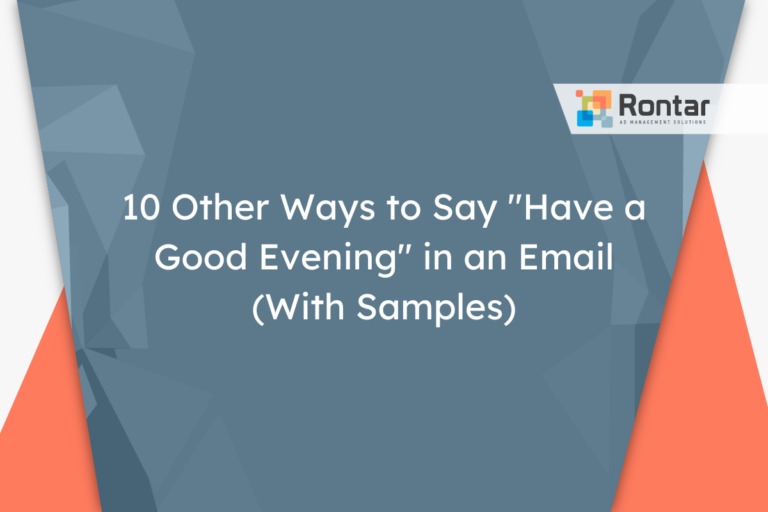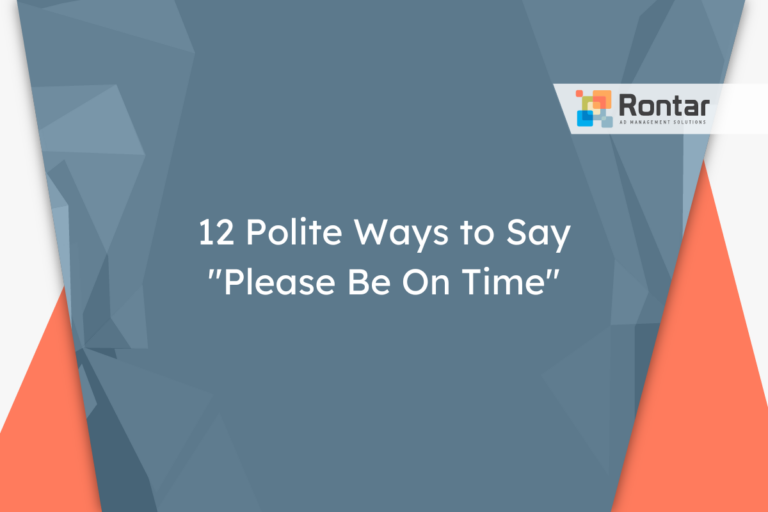10 Other Ways to Say “For More Information”

In many professional settings, it’s important to know how to offer additional information without sounding repetitive or overly formal.
This article lists ten alternatives to the phrase “For More Information” that can make your emails and messages sound more engaging and focused. Each alternative is explained with examples of how and when to use them, ensuring you communicate effectively in the workplace.
Is It Professional to Say “For More Information”?
Yes, it is professional, formal, and polite to use the phrase “for more information”. This phrase works well in situations where you want to guide someone to additional resources or contacts for further details. It’s suitable for use with all types of recipients, including clients, colleagues, and superiors, and across various communication channels like emails, letters, and reports.
Email example:
Dear Lisa,
We appreciate your interest in our upcoming webinar series on digital marketing strategies.
For more information, please visit our events page or reach out directly to our coordination team.
Warm regards,
Mark
Pros:
- Clear and straightforward, making it easy for recipients to understand that further information is available.
- Universally understood in professional settings.
- Helps guide the recipient towards next steps or additional resources.
Cons:
- Can become repetitive if overused in documents or correspondence.
- Might seem too formal in more casual or creative settings.
Sometimes, you might want to use an alternative phrase to “for more information” to avoid repetition or to match the tone of your message better.
10 Other Ways to Say “For More Information”
Here are ten common alternatives to the phrase “For More Information” that fit well in a professional email within the workplace:
- To learn more
- For further details
- To find out more
- For additional information
- Should you need more insight
- If you require further assistance
- To get more details
- Visit our website
- Contact us
- See our FAQ
1. To learn more
Compared to “For More Information,” “To learn more” sounds friendlier and slightly less formal, yet it remains professional and polite. It suggests an invitation for the recipient to explore the subject matter further. This alternative is particularly useful in messages that aim to engage the reader’s curiosity without sounding too pushy.
It is well-suited for emails targeting potential customers or partners who might benefit from additional knowledge about a product or service. “To learn more” works great across digital communication platforms, especially in email marketing or informational newsletters.
Here’s an example:
Greetings, Thank you for expressing interest in our software solutions. To learn more about how our software can benefit your business, please check out the resources available on our website. Best, Thomas
2. For further details
“For further details” is a synonym of “For More Information” that maintains a professional and formal tone. It’s a bit more specific, directing the reader’s attention to the finer points of the topic or offer. This alternative is great when you want to imply that there is more precise or technical information available beyond what has been provided.
This phrase is best used in communication with colleagues or clients who are seeking more in-depth information about a project, product, or service. It’s perfectly suited for professional emails, reports, and proposals where detailed explanation or specification is required.
Email sample:
Hello, As we discussed in our meeting, our new project offers several cutting-edge solutions. For further details on the technical specifications, please refer to the attached document. Regards, Alicia
3. To find out more
“To find out more” is another friendly, engaging alternative to “For More Information” that invites the reader to explore additional content. It is slightly informal but still very professional and polite, suitable for messages meant to foster curiosity and encourage further investigation.
This phrase works well in emails to potential clients about new products, upcoming events, or services. It helps create a sense of intrigue and can be effectively used on social media platforms, websites, and email newsletters.
Example:
Dear valued client, We're excited to announce the launch of our new product line! To find out more about how these products can enhance your experience, visit our website today. Warm regards, Jamie
4. For additional information
“For additional information” closely mirrors the original in its formal and professional tone but adds a nuance that there’s supplementary information ready for those interested. It’s ideal for situations where you have already provided a base level of info and are offering to provide further detail.
This alternative is especially applicable in professional emails where you are addressing clients or stakeholders who might need comprehensive details before making a decision. It’s suitable for use in business communications, reports, and formal emails.
Here’s an example:
Dear Partners, Following our recent discussion on the new investment opportunities, we have compiled a detailed report. For additional information, feel free to access the report linked below or contact our team. Sincerely, Derek
5. Should you need more insight
Offering a more tailored approach, “Should you need more insight” conveys a professional and polite demeanor but with a personalized touch. It suggests that more in-depth understanding or clarification is available, should the recipient seek it.
This phrase is particularly effective in communications where personalized service or detailed personal advice is part of the value proposition, such as in consulting or advisory services. It fits well in emails, direct messages, and letters to clients or colleagues requiring a high degree of customization or specificity.
Example:
Hello, Thank you for your inquiry about our consultancy services. Should you need more insight into how we can assist your business specifically, do not hesitate to get in touch. Best wishes, Oliver
6. If you require further assistance
The alternative “If you require further assistance” offers a professional, formal, yet caring approach. It’s especially suitable for service-oriented messages where the sender is offering help or support beyond what has been initially provided.
This phrase is excellent for customer service emails, technical support messages, and any professional communication where assistance, help, or support is being extended. It reassures the recipient that help is on hand should they need it.
Email example:
Hello, We noticed you've recently made a purchase with us, and we hope you are satisfied. If you require further assistance with your new device, please feel free to contact our support team. Kind regards, Beth
7. To get more details
“To get more details” is a straightforward, professional alternative that implies action on the part of the reader to acquire more specific information. It’s a bit less formal than “For More Information”, making it versatile for a range of communication scenarios.
This phrase fits well in emails to customers or clients who might be at the early stages of exploring a product or service. It can be used in both written and digital marketing materials where encouraging the recipient to seek more specific knowledge is desired.
Here’s an example:
Dear Subscriber, Exciting news! Our company is launching a new service next month. To get more details, keep an eye on our upcoming emails and announcements. Cheers, Mia
8. Visit our website
Unlike “For More Information”, “Visit our website” is a direct call-to-action that encourages the recipient to actively engage with digital resources for more information. This phrase is professional yet has a straightforward approach that works well in digital communication.
It is particularly effective in email signatures, marketing emails, or any other form of digital communication aiming to increase web traffic. It guides recipients to where they can find comprehensive information at their leisure.
Example:
Hi there, We're thrilled to introduce our newest range of eco-friendly products. Visit our website to explore the full collection and learn more about our sustainability efforts. Best, Leo
9. Contact us
“Contact us” is an invitation that is both professional and polite, and slightly more informal than “For More Information”. It encourages direct communication for detailed queries, making it perfect for personalized interactions.
This alternative is highly suitable for customer service-oriented messages, where creating a direct line of communication is crucial. It’s applicable in emails, on websites, and in brochures, particularly when you want to offer recipients the option to reach out directly with their questions or concerns.
Email sample:
Hello, Thank you for showing interest in our bespoke solutions. Contact us directly if you have specific questions or need more detailed information. Warmly, Sophie
10. See our FAQ
“See our FAQ” directly guides readers to a specific resource, differing from the general offer of “For More Information” with a precise location for answers. It is professional, efficient, and implies that many common questions are already addressed in an easily accessible format.
This phrase is best used in communications aiming to preemptively answer common queries, reduce repetitive questioning, and streamline customer support. It’s particularly effective in emails, on websites, and in product or service guides where common concerns and questions can be systematically addressed.
Example:
Dear Customer, We noticed you recently had some questions about using our platform. See our FAQ section for quick answers to common issues and guidance. Kind regards, Evan
Final Thoughts
Choosing the right phrase to direct someone for more information is key to effective communication in the professional world. The alternatives provided in this article not only enhance your emails and messages but also make your communication more engaging.






